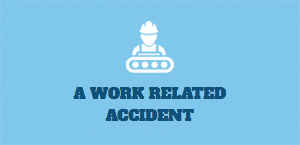About Pain
- You are not sleeping well and wake often because you are uncomfortable
- You have tried ‘everything’ to get better, but nothing is helping
- Because no one can SEE your problem, you are beginning to think that you might NOT have a problem
- You are frustrated by some people telling you that you SHOULD be better by now (if you did exactly what they did-or read the success story in the magazine)
- You cannot make any plans because you do not know how you will be feeling
- Relationships with your family, your friends and even with your health providers at times have changed- for the worse!
Does this sound like you?

Chronic or Persistent pain is often used by people in pain as well as their health providers as a DIAGNOSIS rather than as a symptom of a problem ( think of the pain as the noise accompanying the problem)
Persistent Pain- means that you have been ‘experiencing’ ![]() longer than what would be considered usual or expected – for whatever condition may have caused the problem.
longer than what would be considered usual or expected – for whatever condition may have caused the problem.








To ‘recover’ from the problem, it is important to understand ( or learn) how different parts of your body work and how your brain controls your ’thinking process’
Pain is a message
Acute Pain: can be helpful.
- It is telling you to ‘take your hand off the burner’
- It is telling you that you need to see your doctor because of this new pain in your stomach
- It is reminding you that recovery from surgery takes time
Persistent Pain- is usually not a dangerous feeling, but it is still a MESSAGE – it is telling you TO DO something to CHANGE that feeling
- It is telling you that your back pain is worsening because you have been sitting for too long. Stand up and move around !
- It is telling your neck that the computer monitor is not at the right height- and that you have to lower it so that you do not have to ‘look up’ at the screen.
- It is telling your stiff achy fingers- to stop keyboarding (and knitting). Soak your hands in warm water, do some gentle stretching exercises and rest.
Everyone’s pain experience is different, and each person must develop their OWN way of managing their problems- learning new skills – based on each person’s unique situation.
But because we are often embarrassed (or may not realize we are embarrassed) to say we are extremely worried and overwhelmed by the ![]() , we can easily dismiss those OTHER feelings as not important.
, we can easily dismiss those OTHER feelings as not important.
Learning to separate your pain experience from your suffering will enable you to feel that you are DOING something that over time, will CHANGE and make you feel and function better.

WHY is this website called Don’t Go To The Ouch ?
Unless you have a rare condition called ‘congenital analgesia’ (insensitivity to pain), every person will say OUCH at some point in time.
WHEN you say OUCH and HOW loudly you say it out depends on many different factors.
Each person’ pain experience is a very personal one.
“An unpleasant sensory and emotional experience associated with, or resembling that associated with actual or potential tissue damage’.
(sounds like you may or may not have hurt yourself in some way)
The ‘additional notes’ of that definition remind us that every person has their own individual biological, psychological and social factors affecting their pain experience.
The fact that some people say OUCH – when it does not appear that much as happened to them and others do not say OUCH – until they tear a ligament or break a bone – reminds us that each pain experience is unique.

